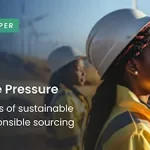Contact Us
Contact Arroyo Strategy
Please fill out our contact form — we looking forward to connecting with you!
X
Reflecting Forward
Lessons Learned to Help Guide Modern Procurement Organizations

Procurement has undergone significant changes over the last 30 years, driven in large part by technological advancements. While technology has transformed much of what procurement does, one constant is the vital role of humans in the procurement function. We believe human touch is critical to make sense of data, drive strategic decisions and build and develop business relationships.
Over the past three decades, Arroyo Strategy has helped procurement teams across every industry transform their operations. In this article, we’ll share valuable “dos and don’ts” that we’ve learned during that time. Focusing on six core areas can help procurement organizations’ departments and their leaders avoid repeating past missteps and operate more efficiently.
Communication and Relationship Management
Historically, procurement organizations have treated suppliers as transactional partners or even adversaries. This attitude leads organizations to guard their information, which reduces a supplier’s ability to deliver on changing needs. It also leads to a culture of narrow cost negotiations, compromised trust, and reduced collaboration.
Effective communication relies on setting clear expectations with suppliers, being proactive and transparent, and building a foundation of trust. From the outset, clearly defined expectations on performance standards, channels of communication, and exchanges of information will help minimize misunderstandings and foster collaboration.
Promote proactive and transparent communication by openly sharing forecasts and information gaps to empower suppliers to plan strategically, increasing the likelihood of success.
Internally, it’s also important to adopt an inclusive procurement strategy to strengthen relationships with corporate finance, engineering, legal, and other business functions. Procurement organizations do not operate in siloes, and a lack of coordination with business stakeholders can result in bypassing established procurement processes.
Be sure to maintain open communication, honor commitments, and ensure the information shared is reliable. This helps to preserve and build trust, which is the foundation of effective collaboration.1
Price and Quality Considerations
One of the biggest challenges in procurement is choosing dependable suppliers who match your standards for quality, ethics, values, and price.
Price consideration is imperative to a company’s overall profitability. Organizations can use cost analysis tools to determine important metrics, including the total cost of ownership, costs for maintenance support, and upgrades during a product’s lifecycle.
Quality is crucial for customer satisfaction, brand reputation, and revenue. Procurement teams often sacrifice quality for a “good deal,” leading to sub-par products due to late delivery or ethical compromises. When balancing price and quality, understand your supplier and their processes.
- Research their capabilities, certifications, and records of accomplishment.
- Conduct regular visits and audits to ensure they can meet your quality standards and deliver products and services on time.
- Formulate clear questionnaires during the supplier selection process to help ensure a good fit.
A rigorous focus on quality will ensure that procurement remains a valued partner to your internal stakeholders, and help you build mutually beneficial relationships in the long term.2
Negotiation Strategy
To excel in procurement, robust negotiation strategies are vital. Before entering a negotiation, determine your goals, including your most desired outcome, least acceptable outcome, and best alternative. These factors will enable you to make informed decisions and determine which concessions you could offer.
Create a team with designated roles and a clear understanding of the negotiation process. Consider factors such as quality, response time, logistics, and the relationship with the supplier. Work to understand the needs of both parties to help explore alternative options and find ground for compromise.
Once the negotiations begin, be sure to maintain a professional demeanor throughout. Avoid using positional bargaining when negotiating with suppliers. This means focusing only on specific points and keeping a clear perspective.
Don’t rush the process or accept unsatisfactory agreements, and don’t let emotions or a confrontational attitude affect good judgment, as this may lead to defensiveness. Avoid focusing solely on price, leading to suboptimal terms and unfavorable agreements. It’s essential to look at the agreement holistically.3
Technology Adoption and Adaptation
Procurement teams are in a state of disorder when it comes to adopting modern technologies. Some are still mired in their core practices, while others are slow to adopt innovative technologies due to cost or a lack of trust. Instead, teams may use an online catalog to search for needed items and an online shopping cart to create requisitions. However, specialized procurement technology can be used more efficiently. It will allow organizations to adopt more quickly, avoid outside disruptions, and transform their procurement function from within. Organizations that are slow to adapt to new technology are at risk of exposing their business to external disruptions that could affect internal procurement transformation process. Fortunately, more procurement leaders are reevaluating their current processes.
A survey by Ardent Partners revealed that:
In the same survey, most mid to large-size organizations reported using e-procurement and e-sourcing software, and we predict its use will grow exponentially in the coming years. Using procurement software allows teams to reduce their requisition order cycles, lower their requisition to order costs, and cut back on maverick spending. The benefits are too great to pass up.
If you have procurement technology available, contact your provider make sure that you are using the system to its full potential. Be sure to stay open to process improvement opportunities. For example, you may find it’s more efficient to switch to a third-party provider to manage your IT systems.
In addition, focus on developing skills your team will need in the future. Identify skill gaps, develop personal development plans, and facilitate training in procurement technology and data analysis. Place an emphasis on skills like category management, strategic sourcing, and spend analysis. This will better position your team for success.
Supplier Diversity
A diverse supplier is a business that is at least 51% owned and operated by an individual or group from a historically underrepresented group, such as women minorities, and LGBTQIA+. The most crucial goal of a supplier diversity program is to increase the access and visibility of diverse suppliers to your company’s spend portfolio.
Leveraging existing certifications and certifying agencies can help purchasing organizations verify whether suppliers meet diversity standards. Organizations like the National Minority Supplier Diversity Council have resources for your supplier diversity program, including MBE Certification services for vendors and vendor lists by region and type. States and local governments also have a strong interest in encouraging a strong diverse business community, and many have enacted related programs.
Take a human-centered approach to remove barriers for minority and woman-owned business enterprises (MWBE) as your certified suppliers. You can achieve this by creating, adhering to, and routinely updating a comprehensive supplier diversity action plan that focuses on diversity metrics and the current state of your supply base.
Sustainability and Ethical Sourcing
We all know that supply chain logistics can be exceptionally challenging, but that isn’t an excuse to disregard sustainability or ethical standards. Unfortunately, many businesses still prioritize short-term cost savings over long-term sustainability.
A survey by Procurious revealed that:
Procurement leaders can increase their value and visibility by playing a significant role in decisions involving sustainability and environmental, social, and governance (ESG) considerations. By their very nature, procurement and supply chain operations are deeply connected to an organization’s impact on communities and the environment.
Our 2024 Annual ProcureCon CPO Report surveyed supply chain, procurement and risk management leaders. Most recognize the potential for procurement teams to drive the sustainability agenda. It also found that while most companies still need to align procurement with sustainability completely, there is a growing commitment to invest in ESG-related skills and capabilities and link procurement KPIs to enterprise-wide sustainability goals.6
No matter the situation your procurement team finds itself in, it is crucial to evaluate the overall value of sustainable and ethically sourced products or services, while considering durability, environmental impact, and stakeholder reputation. You can achieve this by ensuring that the suppliers you partner with provide accurate and comprehensive information regarding the origin, production processes, and environmental impact of their products or services. Conduct thorough due diligence on suppliers by evaluating their sustainability certifications, labor conditions, and adherence to ethical standards.
At the same time, rely on something other than supplier self-assessments. To ensure compliance, verify the accuracy of sustainability and ethical claims through independent audits or certifications. In addition, collaborate with your suppliers to foster innovation and continuous improvement in sustainability. Procurement can heavily influence an organization’s environmental footprint through its purchasing decisions.7
Stay the Course
Consider the entire supply chain and collaborate with suppliers to promote sustainability practices throughout the network, including subcontractors and raw material sources. While short-term evidence shows procurement organizations prioritize efficiency over sustainability, the industry is moving towards long-term impacts of procurement decisions.
We have found that taking a human centered approach to address today’s challenges, in combination with technology investments, will help procurement leaders ensure their organizations can achieve quality, reliability, cost, and sustainability goals. It does take work and the right partners to help advise and execute but it is worth the effort.


